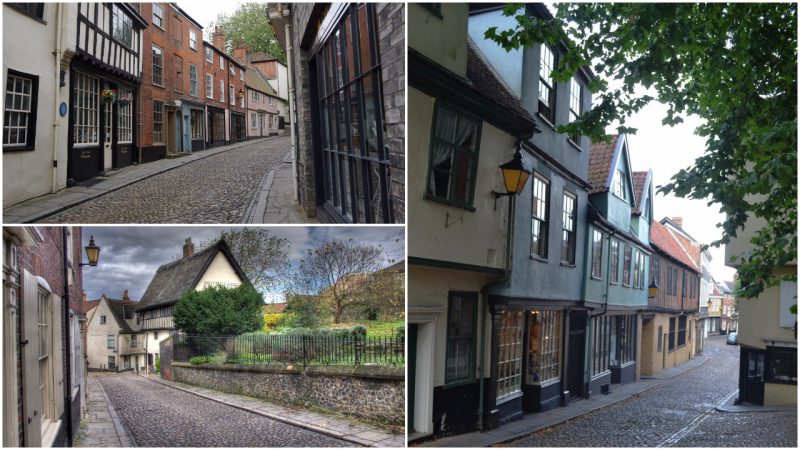Every visitor of the small town Norwich in East Anglia mustn’t miss Elm Hill, the most significant and historic street in the city that offers the doorway of Norwich history.
Elm Hill is widely deemed as one of the best preserved medieval streets in England.
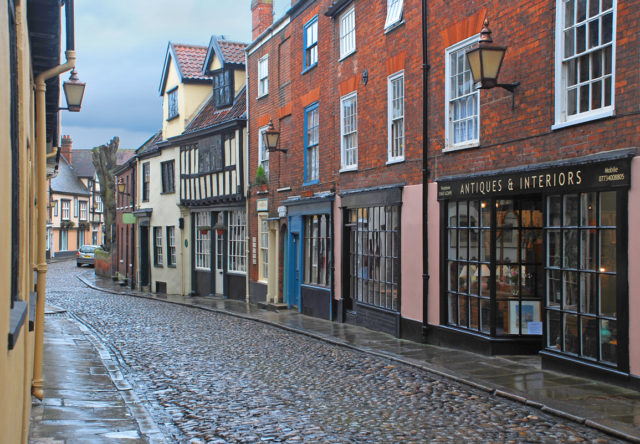
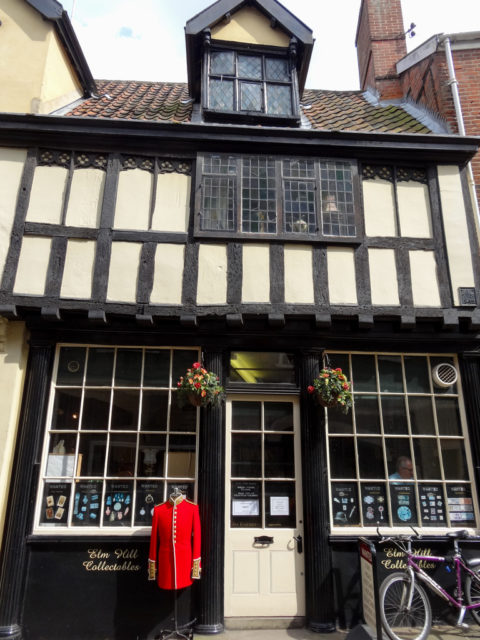
The cobbled lane stretches from the Church of St. Peter Hungate, where the top of Elm Hill meets Princes Street, to the Church of St. Simon and St. Jude, placed at the bottom of Elm Hill on the corner with Wensum Street.
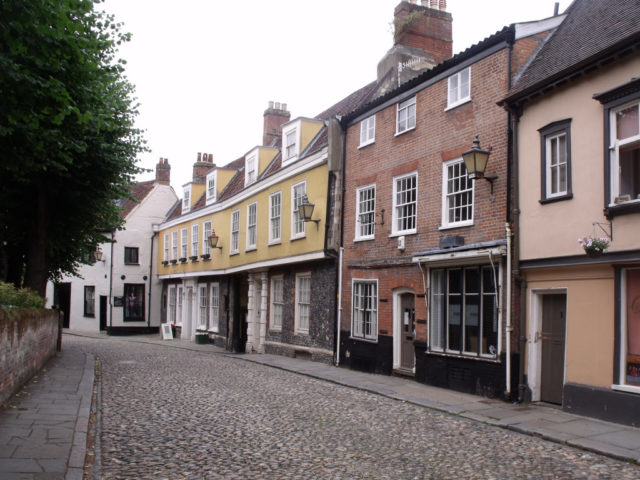
Elm Hill has taken its name from the elm trees that adorned the lane since the first quarter of the 16th century when the churchwardens planted the first one. Unfortunately, there are no more elm trees on the street because of their extinction caused by the Dutch elm disease in the UK.
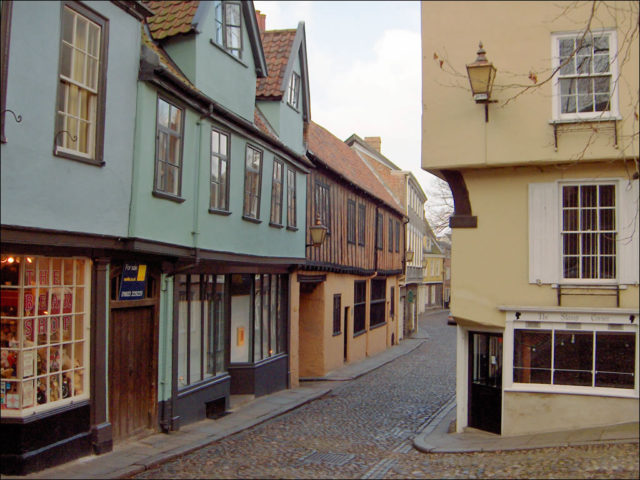
Even though there isn’t any verified record of the date when Elm Hill was first established, there is some evidence for its existence at the beginning of the 13th century.
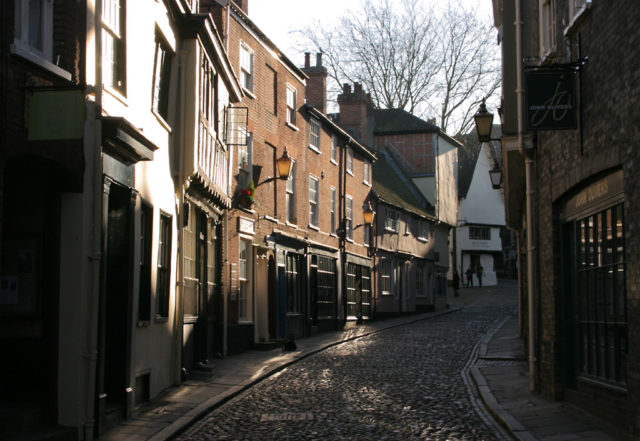
Few houses that now stand in Elm Streets date before 1507, when an awful fire burnt down more than 700 buildings in Norwich.
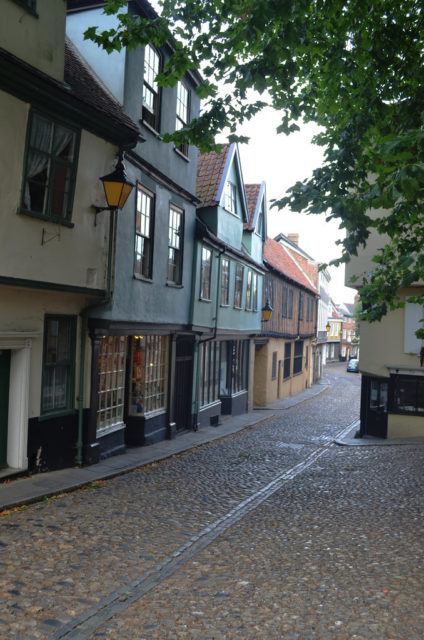
Although it may not be immediately apparent today, the north side of Elm Hill runs on the parallel side to the river Wensum and in the past, many of the merchant houses had their own quays.
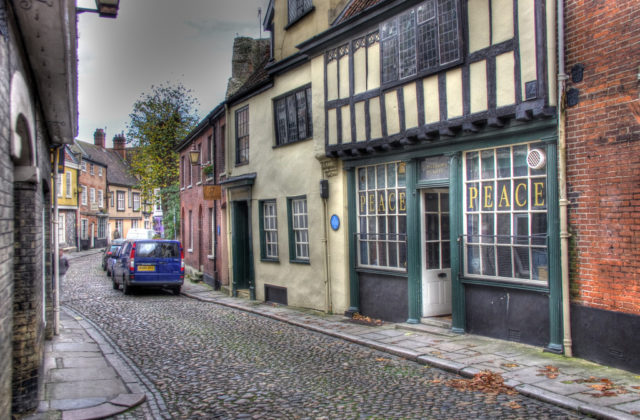
During the 15th and 16th century, Elm Hill and the river were important commercial thoroughfares.
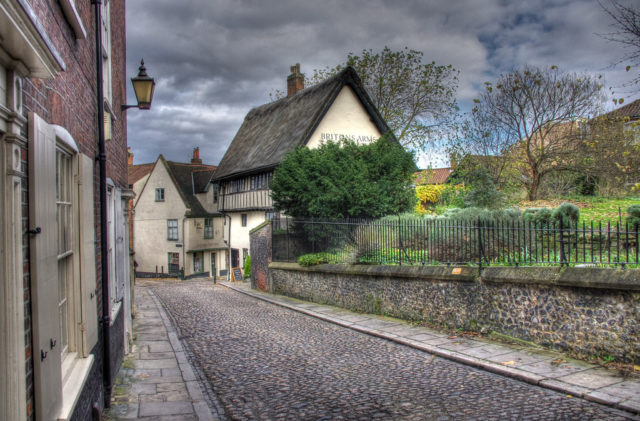
The river was the route from where raw materials were imported and finished products exported via Great Yarmouth.
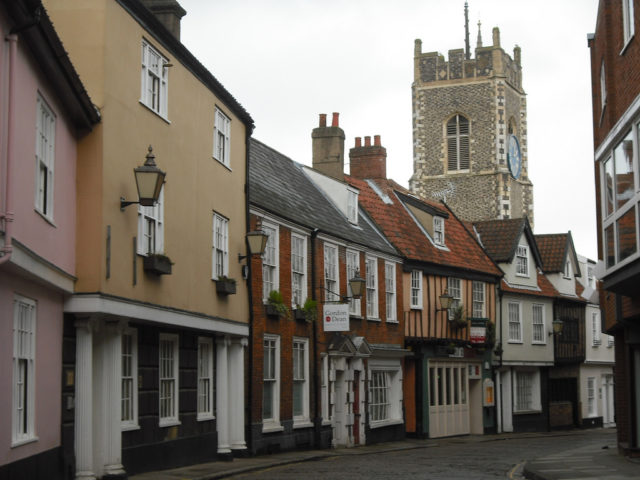
At that time there was an industrial prosperity in Norwich mainly due to the arrival of religious refugees from Europe and the settlement of a large number of weavers, dyers, goldsmiths and other skilled craftsmen.
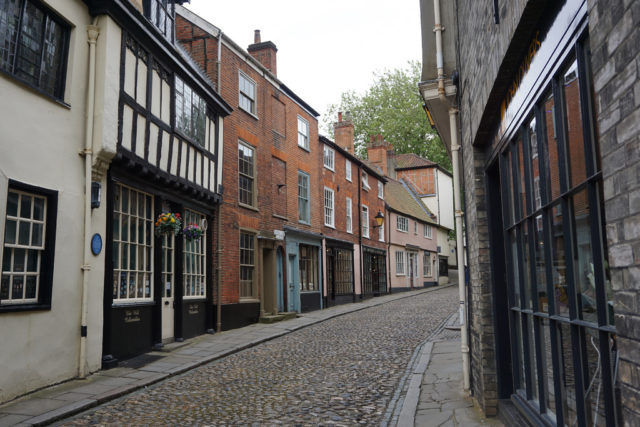
Many wealthy merchants had their houses facing Elm Hill with their factories and workshops at the rear. Between them and the river were the homes of their workers.
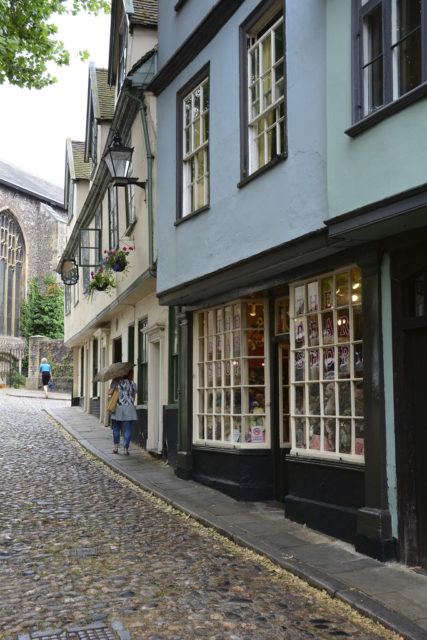
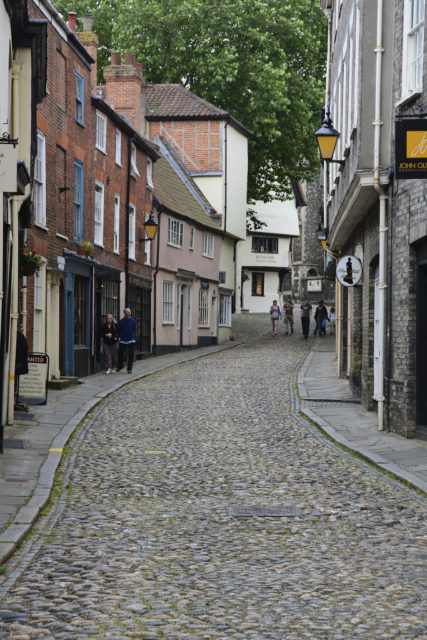
With the gradual decline of Norwich as a centre of the weaving industry in the 19th century, Elm Hill lost its importance and slowly degenerated into a slum area.
By 1926, on the same place where once stood the fine houses of the merchants, there were only neglect and decay. The areas leading down to the river, whilst still inhabited, displayed a scenery of poverty and squalor.
